Lining in the kitchen: choice, pros and cons
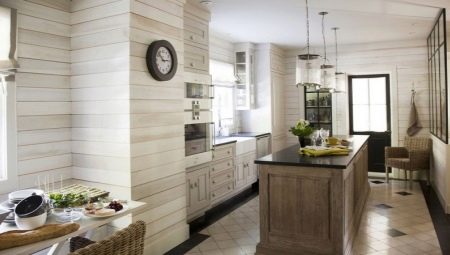
Lining is one of the most demanded finishing materials. The high demand for it is simply explained - it is environmentally friendly, easy to install, and at the same time has an affordable price. How can you use the lining in the interior of the kitchen?
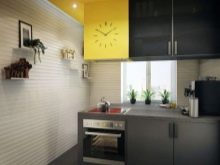
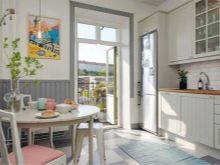

Advantages and disadvantages
Not every owner decides to decorate the kitchen space with clapboard. The fact is that for the majority, this material is firmly associated with the "masterpieces" of Soviet decoration or even with a bathhouse. However, interior designers argue that with the correct use of the material, any room can be made truly cozy and conceptual, and it is quite possible to design it both in a classic style and in an ultramodern one.
The lining is the optimal solution for interiors decorated in eco-style, as well as in such directions as country, Provence and shabby chic. With a competent combination with other materials, the lining can be used in interiors for a loft. These days, the material comes in a wide variety of different textures and shades, thus, the lining can be given the most sophisticated look and harmoniously fit into any interior.
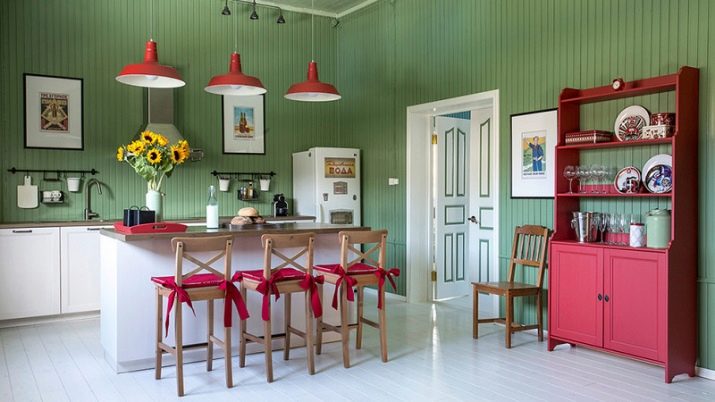
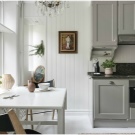
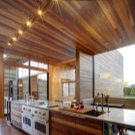
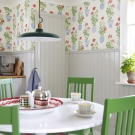
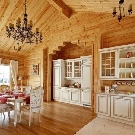
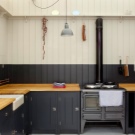
The choice of lining
The lining can be made of plastic or wood. Obviously, wood is most suitable for arranging home interiors, since it is an environmentally friendly, practical and durable material. Indoor cladding will serve its owners for at least 15-20 years without deteriorating its original appearance. Depending on the quality of the material, wooden lining is divided into several classes:
- extra - panels that are completely free of any defects (cracks and knots);
- A - the presence of live light knots is allowed, while their number does not exceed 1 per 1.5 m in length;
- V - the presence of dark live knots in the amount of up to 4 units for every 1.5 meters is possible;
- WITH - in this case, the knots may be falling out.


The higher the class, the better the material, respectively, and the higher its cost... There is also such a variety of panels as eurolining - it is a board impregnated with strong antiseptics and equipped with special grooves for a stronger connection. At the same time, each panel on the back side is equipped with sawn grooves for collecting condensate. Thanks to such a device, cracks do not form on the surface of the walls sheathed with this coating, even with sharp temperature fluctuations.
Plastic lining is usually used for cladding ceilings and walls, it is produced in the form of panels without patterns, but the color solutions can be very diverse. PVC is considered a modern material that will allow homeowners to significantly save the budget for repairs in the kitchen. The material is cheap, but it looks very stylish.
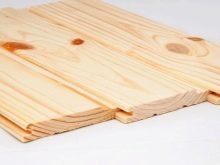
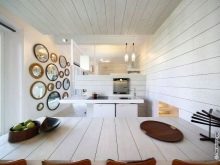
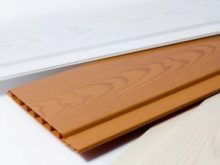
If you cook a lot and often, then in such an environment it is better to use PVC wall paneling., since plastic is less susceptible to negative factors than wood. And with a moderate cooking regime, it is better to give preference to wood - it helps to maintain a favorable microenvironment in the room. However, in this case the surface should be regularly treated with special agents that protect the material from the appearance of mold and mildew.
As a rule, a block house or euro lining is used to decorate the walls in the kitchen, but if you are limited in funds, you can also purchase a panel, but for decorating the ceiling it is advisable to use the calm lining of the profile.
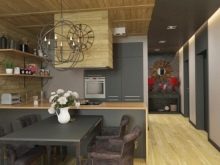
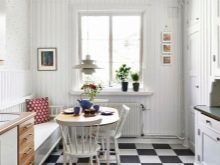
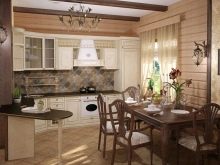
Styles
The lining can be used for kitchen design in a wide variety of styles. Wooden wall cladding is harmonious in the country (cottage) style, as well as in country interiors - in this case, the surface is left in its natural form, unpainted. If you prefer Provence, which is more sophisticated and soft, then it is better to paint the board. For lovers vintage style and shabby chic it makes sense to additionally age the surface - then hitting the style will be 100%.
The lining effectively complements Scandinavian style, this is not surprising, because in Finland, Norway and Sweden, it is wood panels that are most often used for wall decoration inside private houses and city apartments. As a rule, boards are tinted white.
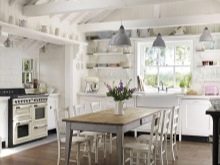

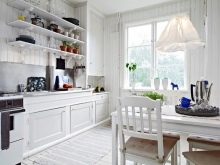
The Scandinavian style is now one of the most popular all over the world, and our country is no exception - it is from here that a new surge of interest in lining as a finishing material for the kitchen arose.
Of course, one cannot do without lining in the so-called eco-houses, as well as in directions that require natural motives in the interior. Wooden sheathing can be used and in modern classics, although in this case its application is limited. Here, only panels are used and always in a pre-painted form.
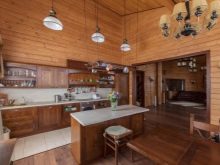
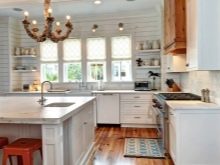
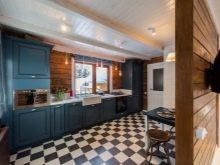
Application in the interior of the kitchen
Depending on the design concept of the interior, the lining is used in different ways in the kitchen. For example, you can upholster all the walls with it, but you can select only the dining area. By the way, it is the last option that is considered the most popular.
The lining can be used in the work area for finishing aprons. In this case it is imperative to soak the boards with fungicidal solutions and cover with special moisture-resistant enamels - then care for the surface will not give you any difficulties. It will still be useful to additionally cover the work surface with transparent tempered glass. In this way, you can protect the panels from adverse external influences.
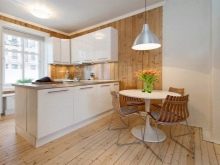
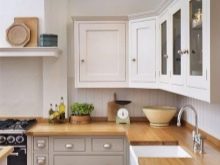
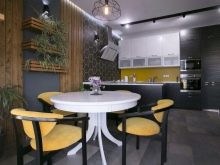
Combining the lining with wallpaper looks very impressive, when the lower part of the wall is sheathed with panels, wallpaper is glued on top, and molding is attached to soften the transitions at the border. Thus, you can create a spectacular imitation of the classic style, such solutions look especially successful in Provence, American classics and English country decors. Another interesting way to use the lining in the kitchen is to design the backdrop for furniture models, when only those sections of the wall are sheathed with panels where the furniture set is planned to be installed.
Often the question arises about the location of the lining - horizontally or vertically? As a rule, it is positioned vertically, however, if you want to achieve a visual expansion of the space, it is better to give preference to horizontal cladding.
Any arrangement is allowed, there are simply no strict canons for decorating the kitchen with clapboard.
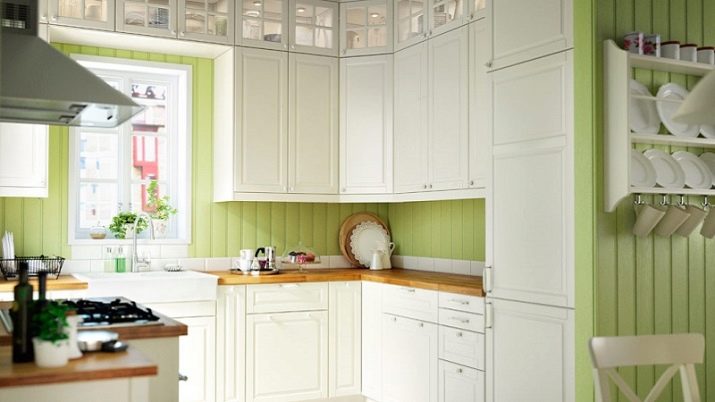
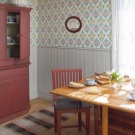
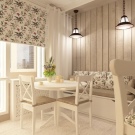
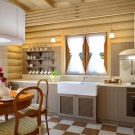
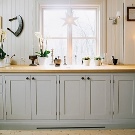
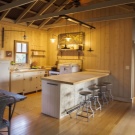
For information on how to attach a wooden lining to the wall, see the next video.








